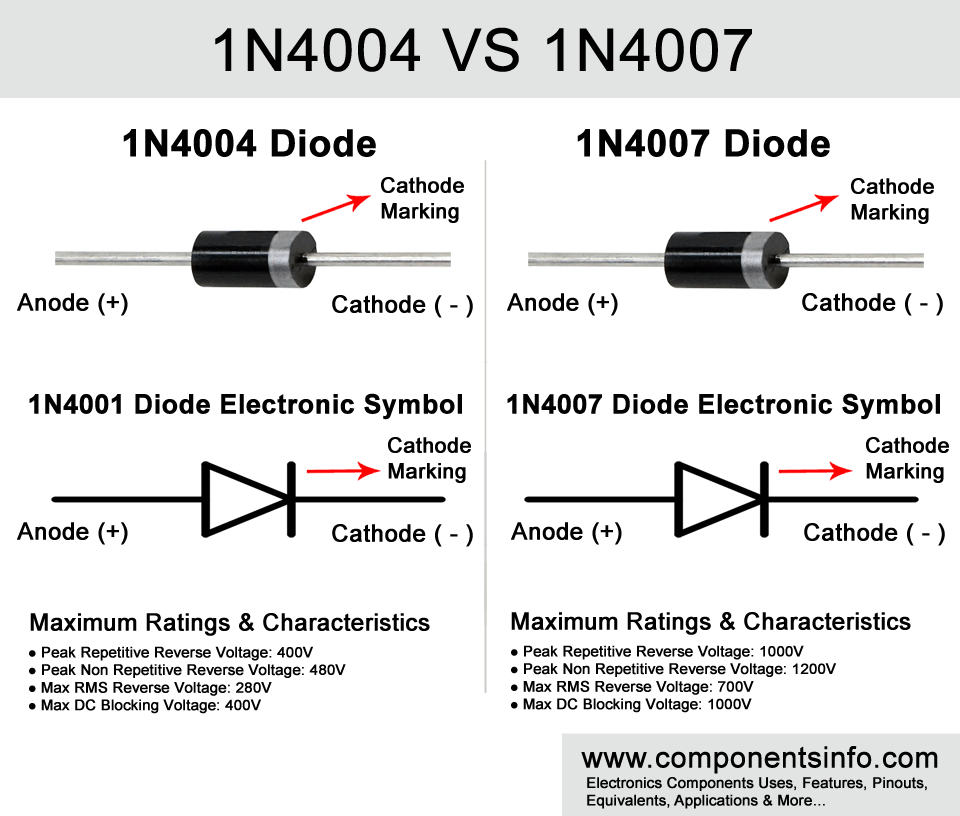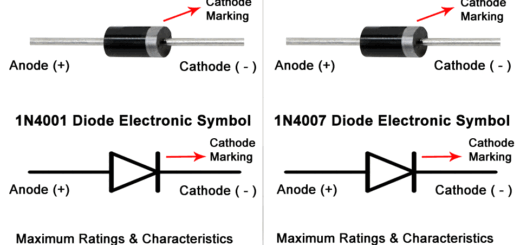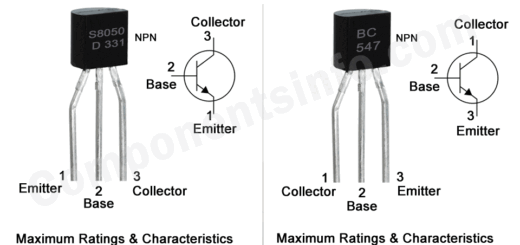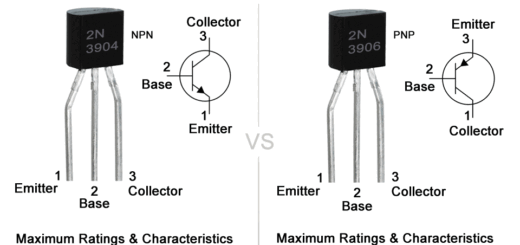1N4004 VS 1N4007: Understanding Differences, Similarities, and Interchangeability
Today we are going to understand the 1N4004 VS 1N4007 diode in which we will discuss their similarities, differences and conditions in which we can and cannot replace them. Both the diodes belongs from the 1N400X diode series which is a series of general purpose rectifiers. There are total seven diodes in this series, all starts from 1N400 and the last digit identifies the ratings of that diode. Most of the ratings are the same such as their forward current, power dissipation, and max forward voltage but their max repetitive voltages are not the same and we have to select them according to our load requirements.
1N4004 VS 1N4007 Physical Appearance
In the above image you can see that the physical appearance of both the diodes are exactly the same from the outside because both are built in same DO-41 package. They look same physically but we can easily identify them by reading their part number printed on their body. Apart from DO-41 package, it is also available in SMD packages.
Ratings & Characteristics Comparison:
| Ratings & Characteristics | 1N4004 | 1N4007 |
|---|---|---|
| Max Repetitive Reverse Voltage (VRRM) | 400V | 1000V |
| Average Rectified Forward Current (Io) | 1A Or 1000mA | 1A Or 1000mA |
| Max Forward Voltage (VF) | 1.1V | 1.1V |
| Power Dissipation (PD) | 3 Watts | 3 Watts |
In the above ratings and characteristics table, we can see that the average rectified forward current, max forward voltage and power dissipation of both the diodes are the same but there is a considerable difference in their max repetitive reverse voltage due which we cannot interchange them in all conditions. The further details about this will be found below.
Can We Use 1N4004 Instead of 1N4007
As you can see in the above table both the diodes have almost same ratings and characteristics but there is a considerable difference between their max repetitive reverse voltage (VRRM). The max repetitive reverse voltage (VRRM) and the average forward current (Io) are important factors to check when you want to replace a diode. So the max (Io) of both the diode are same but the max (VRRM) of 1N4004 is 400V and 1N4007 is 1000V due to which we cannot use 1N4004 in place of 1N4007 in situations when the output load voltage of 1N4007 is above 320V (the max repetitive reverse voltage of 1N4004 is 400V but it is its absolute max rating and the manufacturers do not recommend using a diode on its absolute maximum ratings so as a rule of thumb we use it at least 20% below from its max ratings). But in most situations we can easily use 1N4004 in place of 1N4007 because most of the circuits in which these diodes are used are under 12V, 24V or 48V so in this situation you can easily use 1N4004 in place of 1N4007.
Can We Use 1N4007 Instead of 1N4004
The 1N4007 diode has higher max repetitive reverse voltage than 1N4004 and also the other ratings are same such as average rectified forward current, max fwd voltage and power dissipation. Therefore you can use 1N4007 in the place of 1N4004 in any situation.
Conclusion
Finally, we have learned that 1N4004 and 1N4007 both are of same series and are almost identical diodes. But when it comes to max repetitive reverse voltage or (VRRM) there is a significant between the two diodes and 1n4004 had less (VRRM) than 1N4007 so we cannot use 1N4004 in the place of 1N4007.



